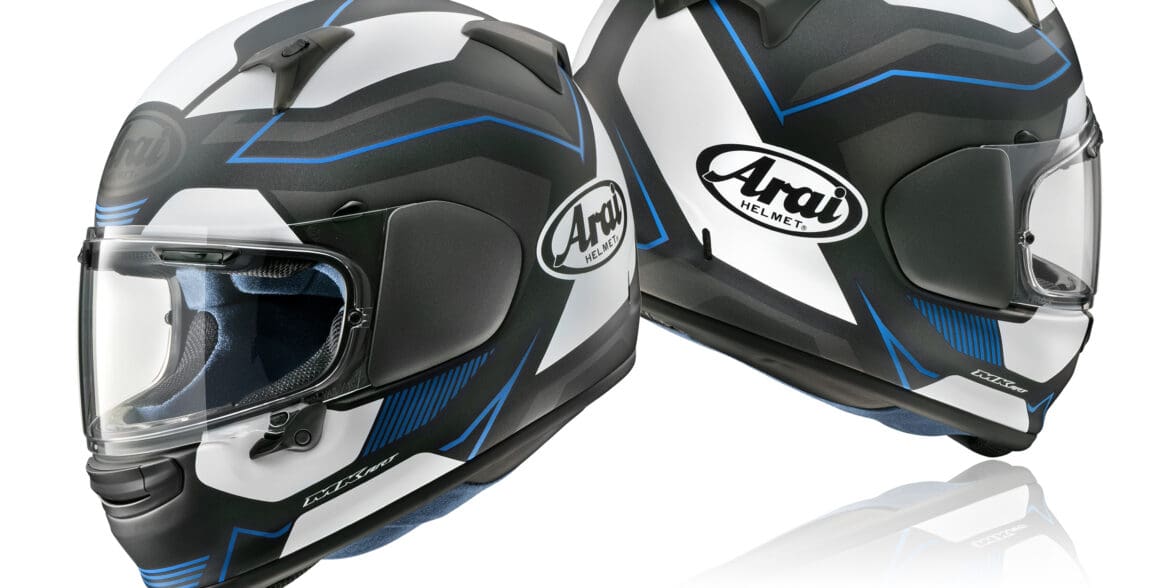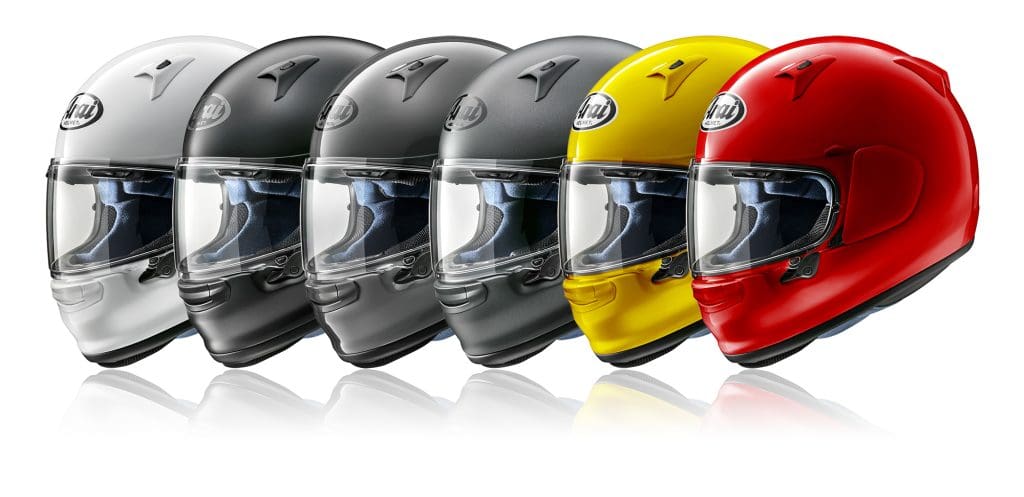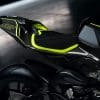An Improvement Over Previous Lids
The Arai Corsair-X model was a very fine helmet. It was a top-of-the-line-lid, but now Arai has a new model. The Regent-X. Built using many of the same ideas as the Corsair-X and offering the same protection, the Regent-X takes things up a notch. The Regent-X is also much less expensive than the Corsair-X. It’s several hundred dollars less at $559.95.
The helmet features a new shell design that makes it easier to put on and take off. The helmet also has Arai’s latest Facial Contour System cheek pad design. The pads are designed to articulate when you’re putting the helmet on or taking it off and fit snuggly on your cheeks once the helmet is on. This provides protection and blocks out noise. The helmet also features pockets for speakers without putting any unneeded pressure on your head or ears.
Let’s take a quick step back and talk about that new shell design. Arai created a new resin for the Regent-X. This Peripherally Belted Complex Laminate Construction is much more cost-effective to produce, but it doesn’t add weight or impact safety negatively. This is where your lower price tag comes from.
Arai also reworked the EPS layer in the helmet. The helmet has a one-piece multi-density liner that is designed to be compact and low-profile while still providing ample protection to the rider.
According to Arai, the helmet also provides the following features:
- Expanded Hyper-Ridge in the chin and cheek area by 5mm for greater protection
- New neckroll design to reduce weight
- Removable perimeter liner and cheek pads
- Custom fitting with optional cheek pad sizes
- Soft brushed nylon fabric interior for incredible comfort
The helmet meets SNELL M2020 standards, and should also meet many other helmet safety standards. Arai says the helmet’s shape helps with glancing blows to the helmet, helping to ensure that the lid doesn’t take a direct hit easily. Overall, the Regent-X looks like one awesome lid. I can’t wait to test it out.




